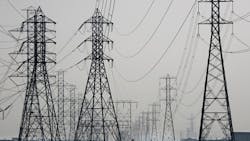Blockbuster Alert: Siemens and GE Make Rival Bids to Acquire Alstom Energy Units
In what would be one of its largest acquisitions ever and a deal that would give it a solid foothold in Europe’s utility and power generation markets, GE submitted a binding offer to acquire the Thermal, Renewables and Grid businesses of Alstom, the French energy powerhouse, with an offer of $13.5 billion (€9.9 billion) enterprise value and $3.4 billion (€2.5 billion) of net cash, totaling $16.9 billion (€12.35 billion).
A few days later, rival industrial conglomerate Siemens made it known it would develop its own bid, reportedly offering to swap some train and energy assets in an effort to beat GE’s offer. Alstom would get some of Siemens’s transportation assets and an additional cash payment in exchange for its power business, Bloomberg reported. Siemens also said it was willing to make guarantees regarding jobs, management positions and locations in an effort to gain favor with French government officials who spoke out vocally against the GE offer.
According to GE, the Alstom board of directors has “positively received GE’s offer” and has appointed a committee of independent directors led by Jean-Martin Folz to review the transaction by June 2. The Alstom board also said it would give Siemens a chance to evaluate the company’s books to prepare a formal offer, according to several news organizations.
“This is a strategic transaction that furthers GE’s portfolio strategy,” Jeff Immelt, GE chairman and CEO, said in the press statement. “Power & Water is one of our higher growth and margin industrial segments and is core to the future of GE. Alstom, like GE, is a company built on engineering, innovation and technology. We respect and value the deep industry and technology expertise of Alstom employees and expect them to add to our proven track record of developing talent and leadership in France and globally.”
Siemens’ existing business lines overlap more with Alstom’s than GE’s do. Both Siemens and Alstom produce of components used in power plants—conventional, renewable and nuclear—and compete in the business for transmission power grid equipment, and both also build high-speed trains.
Alstom’s Grid business generated €3.8 billion ($5.2 billion) in sales and €0.2 billion ($0.3 billion) in income from operations in fiscal year 2013, with 18,000 employees.
Alstom’s Power business provides equipment and services for integrated power plant solutions for a variety of energy sources, including steam, hydro, coal, gas, nuclear steam, wind, and other forms of renewable energy. In fiscal year 2013, the business had €11 billion ($15 billion) in sales and €1.05 billion ($1.4 billion) in income from operations, and 46,000 employees.
Steve Bolze, CEO of GE Power & Water, said, “As we continue to benefit from rising global demand for power generation in key growth regions, we see power generation customers increasingly buying total power plant solutions, maximizing their efficiency. By combining our complementary gas and steam turbine technologies, GE will help customers achieve better performance from their existing and new power plants, enabling more accessible, affordable and sustainable power for people everywhere.”
Siemens has approached Alstom on at least two previous occasions and been rebuffed. Some analysts have speculated that Siemens’ interest is more in getting a look at Alstom’s books and driving up the cost for GE to acquire one of Siemens’ major European competitors. Siemens CEO Joe Kaeser is expected soon to unveil a major streamlining of the Munich-based company’s structure involving thousands of job cuts plus a series of smaller acquisitions and disposals. Siemens is in talks right now to acquire Rolls Royce’s power turbine business.
